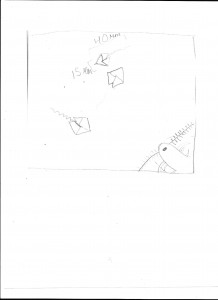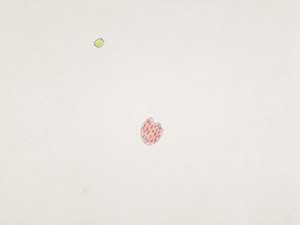Akashiwo sanguinea
by: CD
Common name: red tide
Description
Akashiwo sanguinea is a widespread dinoflagellate that lives as a single unarmored cell. The dorsal side is convex while the ventral side is somewhat concave and is dorso-ventrally flattened. It also has many elongated chloroplasts that radiate from the center. The nucleus is just above the clingulum (a furrow encircling the cell that contains the rotary flagellum) in the epicone (the part of the cell that is above the clingulum usually used in reference to unarmored cells). Akashiwo sanguinea is one of the largest dinoflagellates at about 40-80 um and a width of 30-50 um. Akashiwo sanguinea’s flagellum is often longer than its body. Akashiwo sanguinea also has thecal pores which excrete mucous strands this hints at the presence of extrusomes (a cellular component of dinoflagellates associated with the excretion of extracellular material) another possibility is a type of erectile organelle called a mucocyst (mucocysts contain a fine granular material that can be secreted onto the outer surface of the cell).
 Twenty First Century Representation
Twenty First Century Representation
In the twenty first century Akashiwo sanguinea could represent the legacy one leaves behind. This could be because when Akashiwo sanguinea dies it leaves behind a surfactant that causes mass marine bird mortalities. Just because the legacy Akashiwo sanguinea leaves behind is bad does not mean that the legacy it represents is necessarily bad it can be good to. While it dose harm the marine birds it dose protect the fish that the marine birds feed on.
literature cited:
“Akashiwo Sanguinea.” Akashiwo Sanguinea. N.p., n.d. Web. 03 Dec. 2015. <http://www.sms.si.edu/irlspec/Akashi_sangui.htm>.
image cited:“SERC – Phytoplankton Guide.” SERC – Phytoplankton Guide. N.p., n.d. Web. 03 Dec. 2015. <http://www.serc.si.edu/labs/phytoplankton/guide/addtl_collections/Cape%20Cod/GymsanCC.aspx>.




